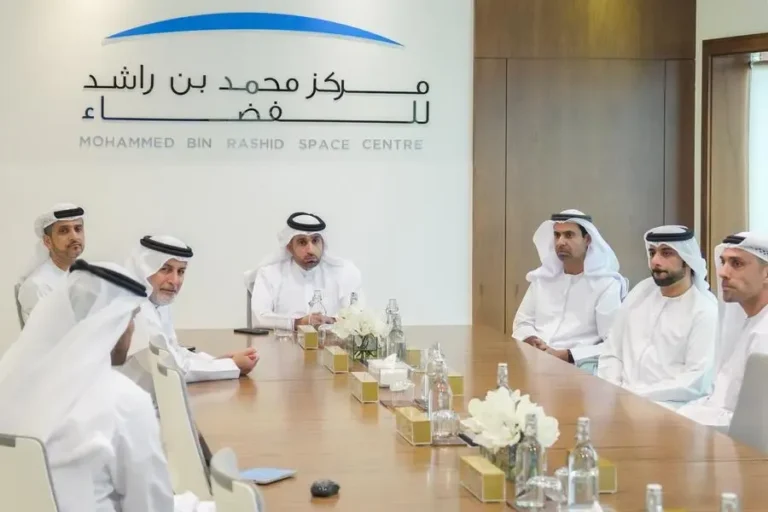Dubai – UAE: The Board of Directors of the Mohammed Bin Rashid Space Centre (MBRSC) held a meeting, chaired by H.E. Hamad Obaid AlMansoori, Chairman, MBRSC to discuss the key developments in the Centre’s programmes and projects, in line with the strategic plan of the UAE’s National Space Programme. The meeting was attended by H.E. Yousuf Hamad AlShaibani, Vice Chairman, and other board members.
During the meeting, the board reviewed the Centre’s ongoing work within the Satellite Development Programme, including detailed updates on the MBZ-SAT and Etihad-SAT missions. Board members were also briefed on the Emirates Lunar Mission’s Rashid Rover 2, scheduled for launch to the Moon in 2026. In addition, the latest achievements of the UAE Astronaut Programme were outlined, reflecting the continued advancement of national capabilities in human spaceflight and scientific research.
ABOUT MOHAMMED BIN RASHID SPACE CENTRE (MBSRC):
MBRSC is an advanced scientific and technological hub, responsible for making the UAE
a world leader in space services and exploration.
Starting with a small team of dedicated engineers in 2006, MBRSC has grown into the incubator of the UAE National Space Programme, fostering scientific research, and building a sustainable space sector in the UAE. MBRSC is home to the Satellite Development Programme, UAE Astronaut Programme, and Emirates Lunar Mission, among others. Under its satellite programme, the Centre has built, developed, and operated several Earth observation satellites, including DubaiSat-1; DubaiSat-2; KhalifaSat, the first satellite that was fully built by Emiratis; MBZ-SAT, the most advanced satellite in the region and Etihad-SAT, the Centre’s first SAR satellite.
Under the UAE Astronaut Programme, MBRSC currently has four astronauts, two of who have undertaken missions to the International Space Station, including the longest Arab space mission in history by H.E. Dr. Sultan Saif AlNeyadi.


